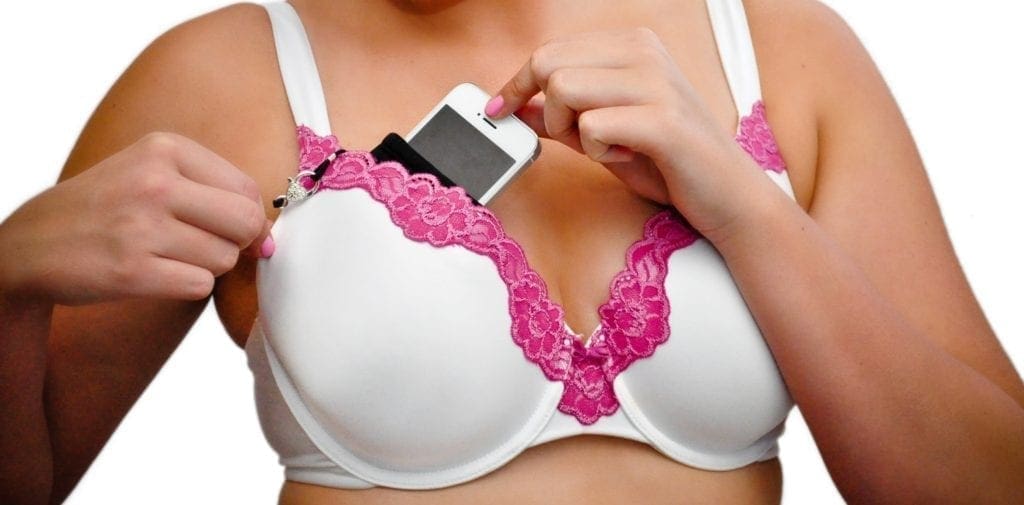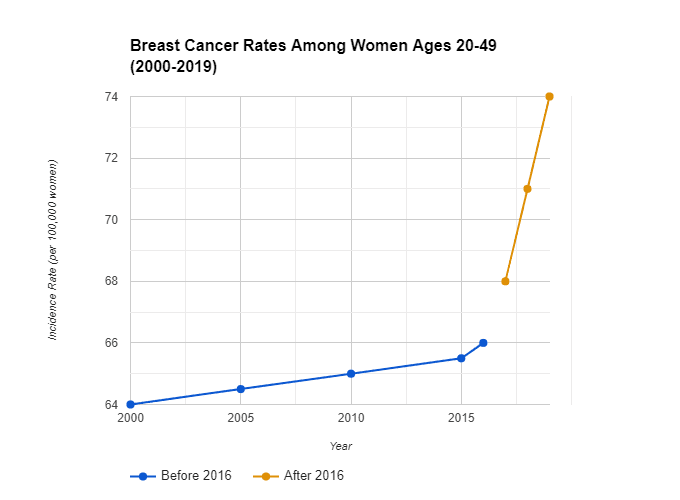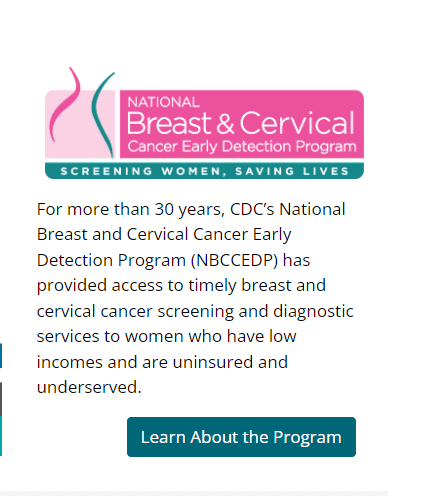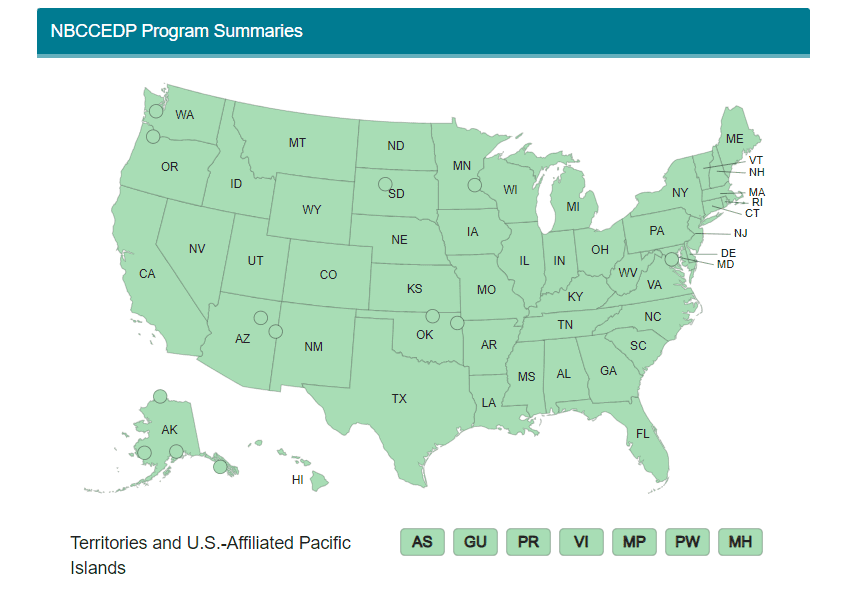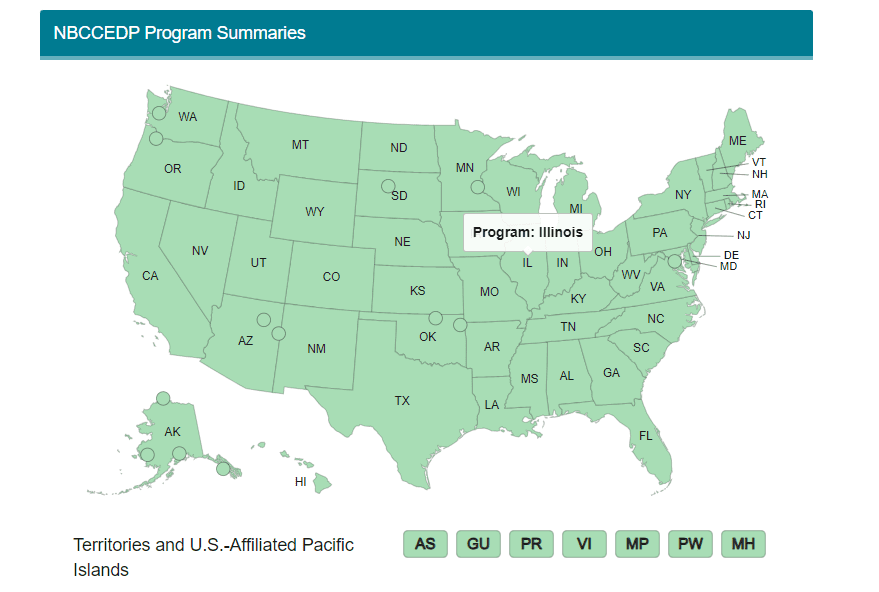If you’re someone who frequently tucks your phone into your bra, you’ve likely wondered about this critical question: Can you get cancer by keeping your phone in your bra?
In our current world, where cell phones are nearly inseparable from our daily routines, this question has become increasingly relevant.
And we have an answer for you.
In this post, we will explore why carrying your phone in your bra is a problem. We’ll see what science says about it. And most importantly, we’ll look at how to protect yourself from problems like EMF-induced breast cancer.
So, let’s dive in.
Phone in Bra: Is It a Thing?
Women’s fashion often prioritizes style over practicality. This is especially true when it comes to pockets, which manufacturers frequently remove from designs to maintain sleek lines.

Want to Slash Your EMF Health Risks?
Want to Slash Your EMF Health Risks?
Good! Learn the one small change you should make right now.
Sportswear is a great example. How many women, when heading out for a jog on their own, opt to stash their cell phone in their sports bra rather than risk being without it?
Other women simply find that slipping their phone into their bra is a handy way to keep it safe and close at hand.
Recognizing this trend, some bra and sportswear manufacturers have even started incorporating cell phone pockets in their designs.
In one 2017 study from Australia, 25% of women surveyed had carried their phones in their bras at one time or another, with 15% having done so in the past week.
The youngest age groups had the highest rates of phone-in-bra use.
To think about it another way, that’s 15 women out of every 100 regularly carrying their cell phone directly against their chest and breasts.
Recent Increase in Breast Cancer Rates
A 2024 study by Dr. Adetunji T. Toriola and team from the Washington University School of Medicine examined data from over 217,000 women in the United States who were diagnosed with various types of breast cancer between 2000 and 2019.
They found that in the year 2000, the rate of breast cancer among women aged 20 to 49 was around 64 cases per 100,000 individuals.
Over the next 16 years, this rate slowly increased, rising by about 0.24% each year.
By 2016, it had reached approximately 66 cases per 100,000.
However, something significant happened after 2016 that researchers are still trying to understand.
The trend took an unexpected turn, with a steep annual increase of 3.76%. In just three years, by 2019, the rate had jumped to about 74 cases per 100,000.
This sudden rise remains a topic of investigation without a clear explanation at this time.
Additionally, the researchers also found a significant difference – a more than 20% higher risk of breast cancer among women born in 1990 compared to those born in 1955.
This discovery highlights an intriguing aspect of changing breast cancer trends.
So, could the widespread use of cell phones have something to do with this trend?
Let’s find out.
Cell Phones and Health Problems
For any cell phone to work, it has to generate electromagnetic radiation (EMF). And in truth, your phone is a source of multiple different types of EMF:
- Cellular data
- WiFi
- Bluetooth
- And possibly others like NFC and wireless charging.
And while cell phones make our lives much more convenient, they also expose us to a significant amount of unnatural radiation"Radiation" in the context of Electromagnetic Fields (EMF) refers to the process by which energy is emitted and transmitted through space or a material medium in the form of electromagnetic..., which our bodies aren’t designed to handle.
Studies suggest that prolonged exposure to EMFs from sources like cell phones can cause problems ranging from DNA damage and infertility to chronic diseases like cancer.
And the list of problems gets longer when it comes to the female population.
Even Phone Companies Tell You Not to Carry Your Phone Next to Your Body
If you read the fine print that’s tucked away in the manual of your smartphone or other devices, you’ll notice something very interesting.
Even the manufacturers themselves tell you not to hold your device directly near your body.
If you carry your phone in your pocket, your EMF exposure can exceed the FCC guidelines (which are themselves insufficient for a variety of reasons).

For example, here’s a legal notice from Samsung for the Galaxy S10:
“Body-worn SAR testing has been carried out at a separation distance of 1.5 cm. To meet RF exposure guidelines during body-worn operation, the device should be positioned at least this distance away from the body.”
That means you’d need to keep your cell phone 15 mm away from your body just to be within the legal exposure limits!
If, on the other hand, you keep your phone nestled close to your skin – as you would with it in your bra – the results could be extremely dangerous.
Let’s take a look at some of the research that’s been done so far.
Can Putting Your Phone in Your Bra Cause Cancer?
Let’s get this straight: establishing a scientific cause and effect for diseases is complicated.
For one thing, many diseases are caused by multiple environmental and genetic factors. And we really cannot tie it up to one single thing.
On top of that, epidemiological studies (those that study diseases in a real-world population) are expensive to run and generally don’t give conclusive proof, while laboratory studies don’t always reflect the real world.
Our post about the health risks of cell phones explains this in detail if you want to know more.
Suffice to say, these exact limitations apply to studying cell phones in bras.
What we can do is take a look at the information available and use that to help us decide how to act.
So, here’s what we do know.
Cell Proliferation and Death
Various meta-studies and reviews themselves note that the research around breast cancer and EMF is thin, and at times conflicting.
And yet, what little research does exist certainly points to the need for more.
Here’s one laboratory study that exposed human breast cells to microwave radiation at 2.1 GHz (a frequency in the range of common wireless devices).
In this study, the researchers focused on understanding how microwave radiationMicrowave radiation is a form of electromagnetic radiation with wavelengths ranging from one meter to one millimeter; with frequencies between 300 MHz (0.3 GHz) and 300 GHz. This type of..., specifically at 2.1 GHz frequency"Frequency" in the context of electricity, Electromagnetic Fields (EMF), and wireless communication, can be thought of as the number of times something happens in a second. Specifically, it refers to... ((a frequency in the range of common wireless devices), affects human breast fibroblast cells.
These are a type of cell found in breast tissue.
They exposed these cells to microwave radiation at a specific energy"Energy" is a fundamental concept in physics, often described as the ability to do work or cause change. In everyday terms, it's what is needed to move things, heat them... absorption rate, known as SAR, of 0.607 Watts per kilogram. This exposure lasted for either 4 or 24 hours.
For context, the FCC limit for public exposure from cellular telephones is SAR level of 1.6 watts per kilogram (1.6 W/kg).
You can learn more about SAR in my post, “What is SAR and How Is Cell Phone Radiation (Not) Regulated?”
After the 2.1 GHz microwave radiation exposures, the researchers found that:
- The radiation exposure resulted in a higher number of unhealthy or dying cells compared to non-exposed cells.
- It caused an increase in the natural cell death process, which is usually a regular part of a cell’s life cycle. However, in this case, it was triggered by the radiation.
- The radiation negatively affected the health of the mitochondria, the cell’s powerhouses.
- However, the radiation did not significantly change the levels of certain proteins involved in cell death.
Overall, the research suggests that this type of radiation can harm these breast tissue cells by disrupting their normal functioning and health.
High EMF Exposure Jobs May Equal to Increase Risk of Breast Cancer
Another review published in Annals of Epidemiology notes that there have been multiple occupational studies showing an increased incidence of breast cancer among electrical workers – in this case, mostly males (females in this profession have been less studied because there are fewer of them).
The review also highlights several other studies, including one where pre-menopausal women in occupations with high EMF exposure were found to be at a significantly higher risk of breast cancer.
The Risks May Increase with Time
But perhaps one of the most interesting studies on EMF and breast cancer to date is this one from 2013.
The report details four separate case studies of young women who developed multifocal invasive breast cancer.
This report states that all the patients mentioned had a habit of carrying their smartphones in their bras, right against their breasts.
They did this for as long as 10 hours every day, over several years.
What’s interesting is that the tumors in these patients formed in the parts of their breasts that were directly under where they kept their phones.
Besides this, there are a few more reasons that make these cases more intriguing:
- All patients had no family history of breast cancer, tested negative for genetic factors, and had no other known breast cancer risks.
- All were under the age of 40 – and presenting with breast cancer without a genetic predisposition is extremely rare for that age group (less than 5% of cases).
- The pathology of all four cases was strikingly similar. Says the report: “All tumors are hormone-positive, low-intermediate grade, having an extensive intraductal component, and all tumors have near-identical morphology.”
What Scientists Saw After Testing
Case 1, a 21 years old woman, kept her cell phone in her bra on the left side for several hours a day. As you can see below, her mammogram showed a mass of calcifications spanning 12 cm (4.7”) directly under the area where she kept her phone.
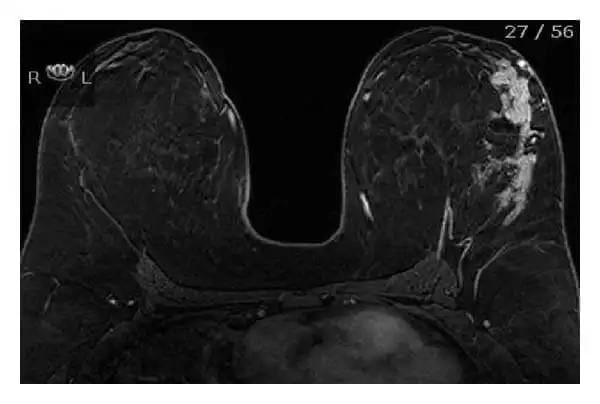
Case 3, a 33-year-old woman had been placing her cell phone in her bra intermittently for eight years.
In the two years before diagnosis, she went jogging 3-4 times per week with her phone in her bra, with GPS switched on to track her running activity.
She presented with “at least six suspicious lesions spanning a length of 8 cm in the upper outer quadrant of the right breast” – again, directly under where she kept her phone.
Cases 2 & 4 were a similar story.
“Although the numbers of reported cases here are too small to have a scientific conclusion,” concluded the study’s authors, “the findings are intriguing and support the notion that direct cellular phone contact may be associated with the development of breast carcinoma.”
What Should You Do?
The reality is that there’s no consensus from the scientific community on EMF radiation and breast cancer.
Some studies find only a weak link or no increased risk. Others show a significant increase in incidence.
As mentioned, drawing conclusive relationships is difficult for several reasons. Studies are difficult to conduct; some suffer from poor design, small sample sizes, or conflicts of interest; diseases can be caused by multiple factors; and cancers can take years to develop and diagnose.
But given the deadly nature of breast cancers, the research above is, beyond a doubt, enough to bring the precautionary principle into play.
If a woman as young as 21 with no family history of breast cancer can develop a tumor directly under where she’s been placing her phone – a tumor that requires a mastectomy and spreads all the way down to the bone – that should be enough to make you think twice.
The simplest solution is, of course, don’t carry your cell phone in your bra. That’s solution number 1.
Solution 2: Minimize Your Phone’s Radiation
I understand that there are times when you need to keep your phone close to your body.
In such cases, you can try to minimize the amount of radiation your cell phone emits. Here are some ways to do that.
- Don’t use GPS tracking (which is constantly beaming a cellular signal)
- Turn off functions like BluetoothFrom the perspective of someone concerned about the health effects of electromagnetic radiation, understanding Bluetooth radiation is crucial, especially in our increasingly wireless world. Bluetooth technology, ubiquitous in our daily... and WiFi when not needed
- Or – even better – put it in airplane mode to stop EMF emissions altogether.
Also note that a cell phone emits heat when switched on, and even that can lead to what’s known as the thermal effect.
In simple terms, it heats your bodily tissue, which can cause lasting damage. So again, the best solution is to turn your phone off or keep it away from your body.
Solution No. 3: EMF Protection Products
If you can’t change your habit of carrying your phone in your bra for some reason, I recommend at least getting an EMF protection product, so that it can block and deflect the harmful EMF radiation away from your body.
Our products like the SYB Phone Pouch and the SYB 5G"5G" refers to the fifth generation of wireless communication technology, a step up from the previous 4G, 3G, and 2G networks. It's designed to provide faster internet speeds, more reliable... Phone Shield can help.
Regular Breast Cancer Screening
Besides following the earlier tips, if you are a woman between the ages of 40 to 54, the American Cancer Society recommends getting a mammogram every year for breast cancer screening.
If you are 55 or older, you can choose to have mammograms every two years, or you can continue with yearly screenings.
If you cannot afford the cost of these screenings and are uninsured or underinsured, you can explore the CDC’s National Breast and Cervical Cancer Early Detection Program (NBCCEDP).
NBCCEDP Eligibility Criteria
If you match the following criteria, you might qualify for free or affordable screening tests:
- You either don’t have insurance or your insurance doesn’t cover screening exams.
- Your annual income is at or below 250% of the federal poverty level.
- For breast cancer screening, you need to be between 40 and 64 years old.
- For cervical cancer screening, the age range is 21 to 64 years.
- Women who are younger or older than these age ranges might still be eligible for screening services under certain conditions.
How to Find a Free NBCCEDP Screening Program Near You?
To find a free NBCCEDP screening program, click the link below:
https://www.cdc.gov/cancer/nbccedp/
Navigate to and click the: “Learn About the Program button.”
Locate and click the “Find a Screening Program Near You” option.
Scroll down until you see the map of the United States.
Click on your state. For example, I have selected Illinois.
Using the provided details, contact your state’s office, and they’ll give you more information regarding your eligibility and guide you to the nearest screening centers.
Final Thoughts
In the ever-evolving dance with technology, we find ourselves at a crossroads of convenience and caution.
Our phones are a big part of our lives, but they also bring some unknowns about our health.
As we navigate through this tech-heavy world, each choice we make is important. It’s all about finding a balance that works for both your daily life and your well-being.
So, be aware of the choices you make, like where you keep your phone and how you use technology.
These decisions impact your health in the long run.
Visit the SYB Healthy Living Tips Page for more similar tips to help you live alongside modern technology in a safer, healthier way.
